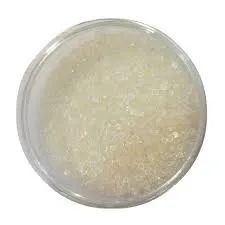Understanding Drug APIs The Backbone of Pharmaceutical Development
The pharmaceutical industry is a complex and multifaceted field, where the development of medications requires meticulous processes, stringent regulations, and innovative technologies. At the heart of this industry lies the concept of Active Pharmaceutical Ingredients (APIs). APIs are crucial components in drug formulation, playing a pivotal role in the effectiveness and safety of therapeutic products.
What are Drug APIs?
Active Pharmaceutical Ingredients (APIs) are the substances in a pharmaceutical drug that are biologically active and intended to provide the therapeutic effect. In other words, APIs are the main ingredients that treat diseases, alleviate symptoms, or lead to patient recovery. A drug can contain multiple APIs, each serving different therapeutic roles. For instance, a combination medication for hypertension might include an API that dilates blood vessels and another that reduces fluid retention.
APIs can be derived from various sources, including natural compounds, synthesized chemicals, or biopharmaceuticals. The method of production significantly impacts the quality, efficacy, and safety profile of the final drug product. Therefore, the development and manufacturing of APIs are governed by stringent regulations to ensure they meet the required standards before they can be used in therapeutic products.
The Importance of APIs in Drug Formulation
The formulation of a drug involves various inactive ingredients or excipients, but it is the active ingredient that delivers the intended health outcomes. The concentration and purity of the API are critical when developing a drug, as these factors influence the drug's safety and effectiveness. Moreover, the bioavailability of the API—the extent and rate at which the active ingredient is absorbed and becomes available at the site of action—can greatly affect a drug's therapeutic effectiveness.
The complexity of drug formulation also necessitates robust quality control mechanisms to ensure that APIs meet required specifications. This includes checking for potential contaminants, ensuring the right particle size, and assessing the stability of the compound over time. These factors are essential to prevent adverse effects and to ensure that patients receive safe and effective medications.
Regulatory Framework and Quality Standards
drug api

Given the significant health implications of drug APIs, the pharmaceutical industry is heavily regulated. Organizations like the U.S. Food and Drug Administration (FDA) and the European Medicines Agency (EMA) establish guidelines governing the manufacturing practices of APIs. These guidelines are encapsulated in the Good Manufacturing Practices (GMP) protocols, which dictate every aspect of API production, from material sourcing through production processes to the final quality control tests.
Compliance with these regulatory standards is non-negotiable. As a result, companies involved in the development and manufacturing of APIs invest substantially in quality control infrastructure, including advanced analytical labs, to perform comprehensive testing. This investment helps mitigate risks associated with drug formulation and supports the overall integrity of the pharmaceutical supply chain.
Trends in API Development
The landscape of API development is evolving rapidly, driven by advancements in technology and changes in regulatory requirements. One significant trend is the increasing interest in biotechnology-derived APIs, especially in the development of biologics and biosimilars. These drugs are typically more complex than traditional small-molecule drugs and require innovative manufacturing processes.
Moreover, there is a growing trend towards outsourcing API production. Many pharmaceutical companies choose to partner with contract manufacturing organizations (CMOs) that specialize in API production. This allows them to focus on their core competencies, reduce costs, and benefit from the expertise of specialized manufacturers.
Sustainability is also becoming a focal point in API development. With the increasing awareness of environmental impact, many companies are exploring green chemistry practices and methods to reduce waste during production. This shift not only aligns with global sustainability goals but also appeals to eco-conscious consumers.
Conclusion
Active Pharmaceutical Ingredients (APIs) are the backbone of drug formulation, playing a vital role in ensuring the efficacy and safety of pharmaceutical products. As the pharmaceutical landscape continues to evolve, so do the practices surrounding API development, manufacturing, and regulatory compliance. Understanding the intricacies of APIs is essential for anyone involved in the healthcare sector, as these components are fundamental to the delivery of effective and safe medications to patients worldwide. With continued focus on innovation and regulation, the future of drug APIs holds promise for improved therapeutic outcomes and enhanced patient care.

